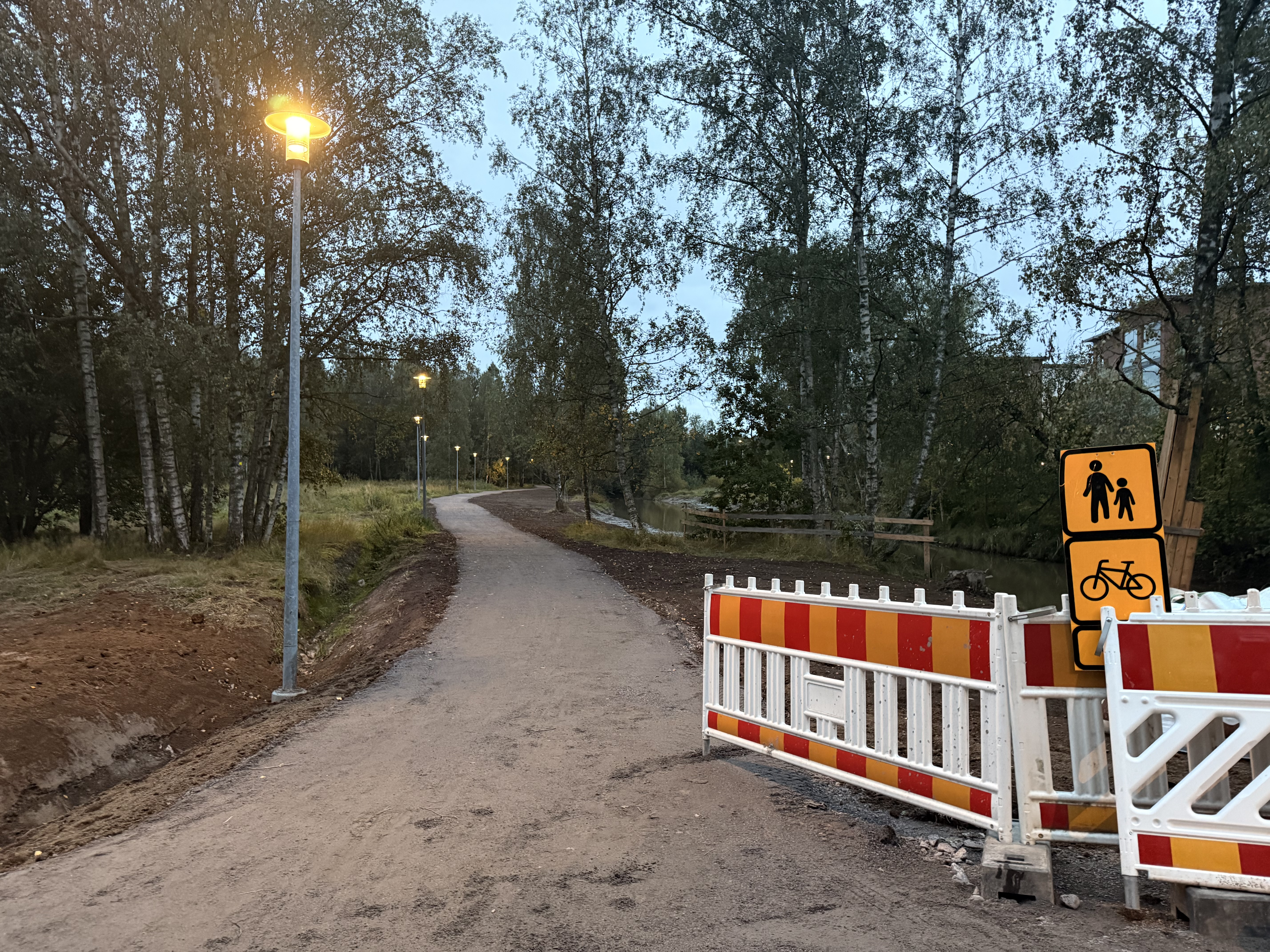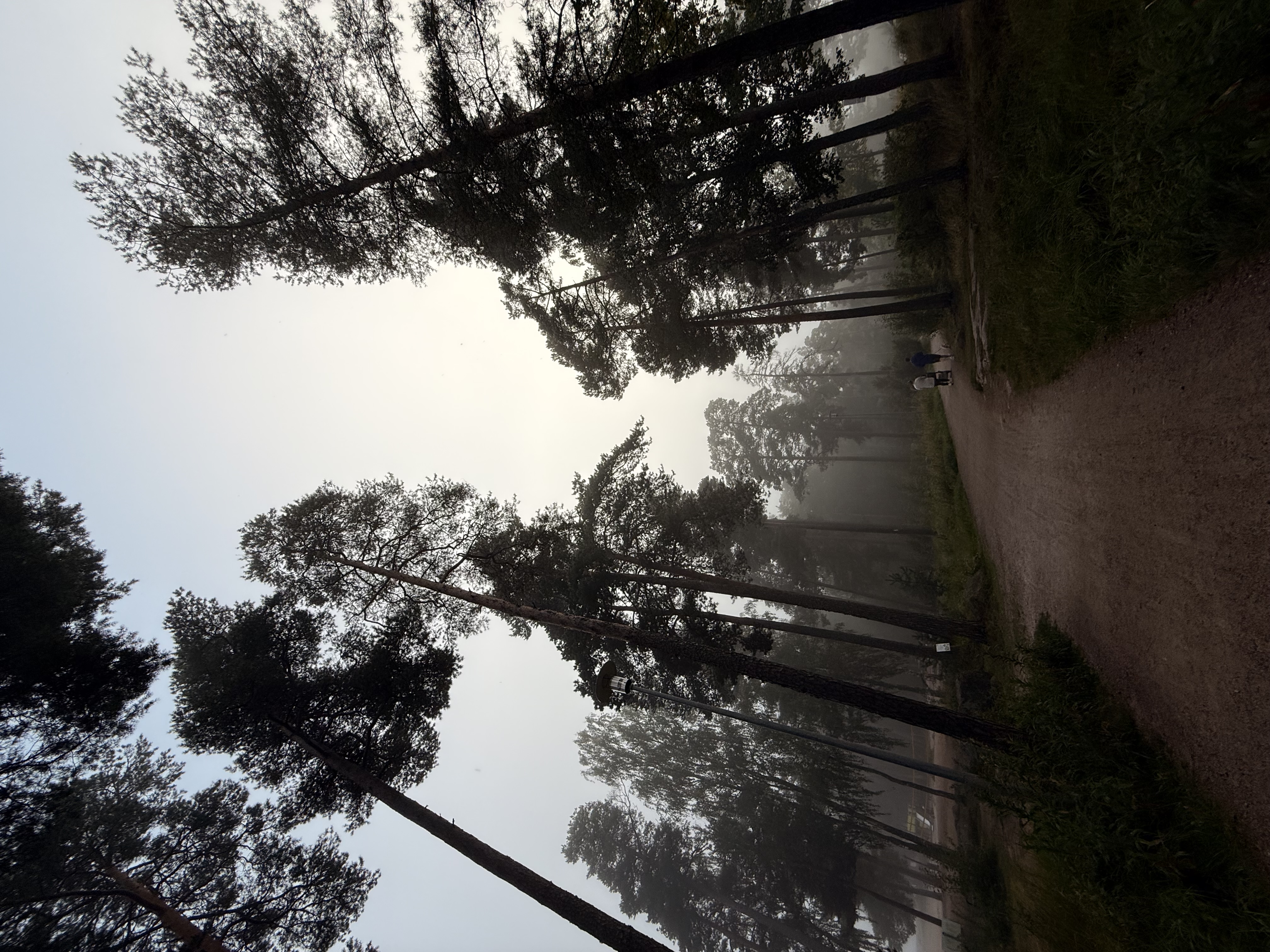
Build or break
Hello from my home in Matinkylä! This is NordLetter #70, a weekly newsletter on living and walking in Finland. Each week I share some of the interesting things I found on the web.
To follow the series, you can subscribe here. A new NordLetter will land in your inbox every Sunday. Not a fan of newsletters? No problem! You can read previous editions here. You can also subscribe to the RSS feed.
You can reach out to me by replying on this mail or adding a comment on this. I am also posting on Mastodon.
It was a weird week.
Savya was ill - he had a runny nose. The daycare send him back to us on Monday, they were looking to close this circle of illness. Which ok - fair - but with Prerna also starting her studies, the situation was challenging.
On Friday, Savya was a bit better so I took him to his daycare. Fridays are days when they take the kids out somewhere - today it was the forest a little distance from the daycare. They have these strollers with four seats on them, a little car for the little ones. As I put him in the stroller Savya started crying. The rule is - as soon as you hand over the child to the teacher, you basically have to run. And so I did.
‘Why do you always have to cry?’, I said to myself as I went through the gate.
While I was passing through the gate, a mother, with a diaper bag in her hand was coming through. As we passed each other, she said, ‘It’s difficult for me too.’
I smiled at her and kept walking on.
I had listened to Dana Gioia talk about grief and how after his child’s death, he would sit in the cemetery for hours and do nothing. Eventually he decided to clean it up. Others joined him in. And they talked.
They talked about their griefs. Of losing people.
That woman whom I passed on my way to the car, reminded me of this conversation and how we all have things to talk about, but no one to talk to.
Find someone to talk to.
And now, for a change of scenery.
They finished the work on that small patch of land on our walking trail. I think what they did was broaden the stream, and clean it up. There is a fresh patch of soil where all this grass used to be.
They have removed the barricades and now we can resume using our trail. Yay!

There was fog in the morning and evening on Friday.
Fog adds romance and intrigue to any scene.
See these pictures for proof.



I took Savya to Tapiola play area today, which is in the AINOA mall, next to Kaisan Cafe on the 1st floor.
If you’re wondering why I am being so thorough with the location, it’s so that I have a reference for the future. Not that I will forget it anyway.
Its a small barricaded area with plushy blocks kids can throw around. This sort of a thing is fairly common here - this one happens to be barricaded. So you don’t have to worry about your kid running off to the escalators. You can relax a bit.
I had heard so much about this place, but it was a bit of a let down. Savya ran around, made friends, jumped around. So it was not that much of a let down.
The thing that I found funny was this - in this place, the adults build the towers, while the kids take them apart. I don’t know why I keep expecting children to play with Legos and build stuff. We gave Savya a lego set last week. Somehow I had expected him to start building the set. I don’t know why.
All he enjoys doing with the Legos is throwing them around.
/five things to share
1. The future of AI hardware isn’t one device — it’s an entire ecosystem by Victoria Song
It just feels out of sync with what people tell me they want. Google’s executives tell me the point of Gemini (and AI in general) is to make people’s lives easier, to return their time to them. It’s a noble quest that seemingly aligns with the exhaustion people feel from the always-on modern life. But even if I can see Google’s vision, even if I genuinely see the value in parts of it — it’s hard to square how adding more gadgets with more AI addresses that existential fatigue.
2. The destination for AI interfaces is Do What I Mean - Interconnected
the user expresses the intent to “remove clouds” and then, today, is required to follow interface bureaucracy to achieve that. AI removes the bureaucracy.
What is the killer app for AI/LLMs?
Search replacement is OK. But there must be something else. True that most of these apps would just be wrappers around prompts, but a good wrapper could be the killer app.
Buttons that let you call the same prompt each time could be a good start.
3. Hungry Worms Could Help Solve Plastic Pollution by Ritsuko Kawai
Looking ahead, the team suggests two strategies for using the wax worm’s ability to consume plastics. One is to mass produce wax worms that are fed on a polyethylene diet, while providing them with the nutritional support they need for long-term survival, and then integrating them into the circular economy, using the insects themselves to dispose of waste plastic. The other is to redesign the plastic degradation pathway of wax worms in the lab, using only microorganisms and enzymes, and so create a means of disposing of plastic that doesn’t need the actual insects.
4. Are Americans Being Conditioned to Accept Delayed Elections?
The danger isn’t just these specific moves. It’s the trajectory they create. The more Americans hear phrases like “civil unrest” and “domestic conflict,” the more plausible it sounds to suggest elections should be delayed “for safety.” History shows how this works. In Turkey, a state of emergency after a coup attempt stretched into years, consolidating power at the top. In Russia, unrest has been a convenient excuse to tighten control over opposition. Even here at home, fear after 9/11 opened the door to surveillance powers most Americans never would have accepted earlier. Fear reshapes what people are willing to tolerate.
Yes, the Constitution fixes the timing of elections. But words on paper only work if leaders respect them and citizens demand they be upheld. If an administration argues that unrest makes elections unsafe, the courts might eventually push back—but the disruption alone could erode confidence in the process. That’s how democratic norms crumble: not with a declaration, but with doubt, confusion, and fatigue
So many things Trump is doing now, to us outsiders at least, seem clear ploys to get America ready to be an aristocracy. This is the first article where I’ve seen it spelled out.
The reason you want to control DC police or be in charge, is that the next time you try a coup you can.
5. How to resist everyday temptations | Psyche Guides
- Impulsive behaviours are universal, but they can start to interfere with your life. If you’re noticing negative consequences, you can learn to respond differently to urges and feel more in control.
- Understand why impulsive behaviours happen. Whether they provide a diversion from certain emotions or get linked with certain settings, impulsive behaviours can become automatic through conditioning. Knowing that is a first step toward changing them.
- Identify why you want to become less impulsive. Focus on a specific impulsive behaviour and write down some ways your life could be better if that behaviour wasn’t getting in the way.
- Practise being mindful of your feelings and urges. Set aside some time during your week for a mindfulness exercise such as the body scan. With practice, urges can become easier to notice and tolerate.
- Deploy urge roadblocks and distractions. Pick out some precautions and diversions that will help you ride out the peak of impulsive urges without engaging in the impulsive behaviour.
- Plan pleasurable activities without impulsive behaviours. Intentionally seeking more enjoyment from other sources can make it easier to reduce the behaviour that is causing you trouble.
- Reflect on what’s working. Notice the moments when you feel more in control and intentional – it’s a sign of progress.
/new posts
These are the posts I’ve written this week. Click the links to read them.
1. Write more
2. Humans and algorithms think differently when coming to a decision
3. Algorithms affect what we post on the socials
If you enjoyed reading this, and know someone else who might, please consider forwarding this to them. It would help this grow and make me happy. 😄
Until next week.